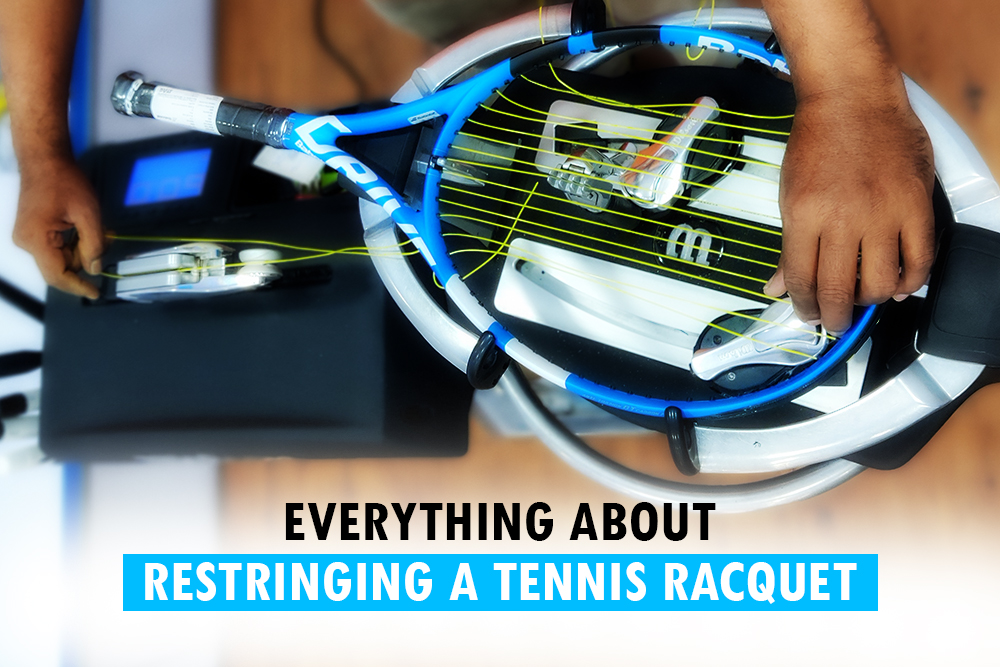The stringbed of the racquet is the most important piece of equipment for any tennis player. The condition of the string largely impacts the overall performance of the player.
How often should a player restring the racquet?
A regular restringing is necessary for the racquet. However, how regular is regular? is a question every player has.
There are many factors that need to be considered while answering the question. The playing level of the player, string choice, comfort, etc are few of them. The thumb rule that is widely accepted in the tennis community about restringing the racquet for a club level or an intermediate player, is that in a year, a player should string the racquet the number of times he or she trains per week. For example, if the player plays 5 times a week, the racquet needs to be strung atleast 5 times a year.
Stringing frequency also varies as per the level of players game:
A beginner player needs to restring the racquet every three months.
An intermediate player will need to restring the racquet once every month.
An advanced level player needs to restring everytime the stringbed snaps. An advanced player is someone who trains almost everyday and most players snap the strings quite often.
A player who has an aggressive style of game with topspin strokes wears the string bed faster than the player with flat hitting style.
When is the right time to change the strings of the racquet?
The right time to change the strings of the racquet depends on the player most of the time. An advanced player can feel the change in performance of the racquet. There are many visual indicators that call for a restringing of the racquet.
Notching: After prolonged usage strings rub against each other and cause friction. This leads to a notch in the stringbed. This is clearly visible in the area that comes in contact with the ball often.
Fraying: Multifilament strings are multi -plyed and come with a protective coating. However after a certain amount of usage the coating wears off and the strings start to fray. This also increases with humidity and moisture. This fraying eventually leads to breakage of the string. Hence, players go for restringing once the strings start fraying.
Besides these indicators advanced players can also feel the change in the performance of the racquet in a few ways.
Some of them are:
Reduced control: When the stringbed loses tension the player finds it difficult to control the ball and makes more unforced errors. Sometimes this leads to erratic performance of the player.
Lesser topspin: When the tension reduces the strings tend to lose their snapback property which demands harder swings to achieve the desired topspin.
Strings loose elasticity as you keep playing with them and after a certain point they feel dead. Playing with dead strings also put you at risk of causing arm injuries.
Hence it is really important for a player to change the string often even if they don’t snap.













Comments